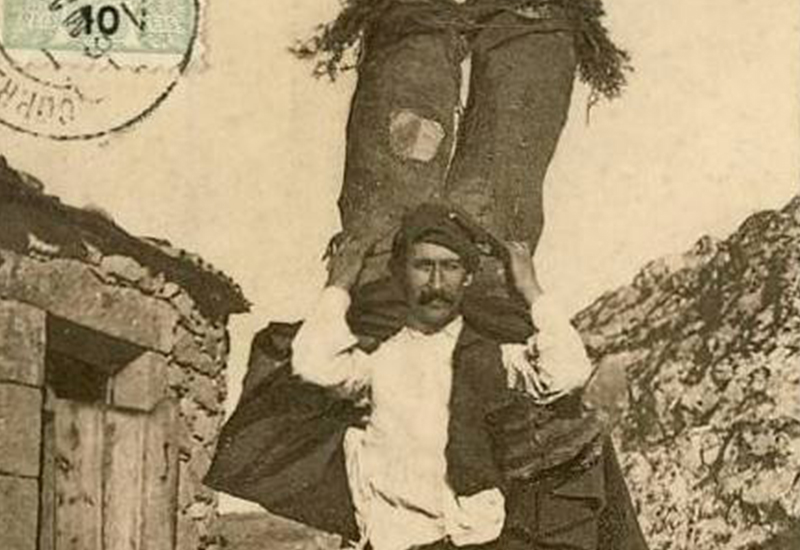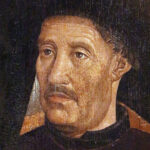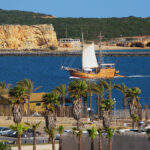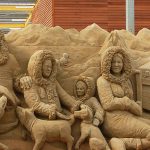This month, the book Livro de Registo de Bilhetes de Residência de Estrangeiros, held by the Arquivo Municipal de Lagos, leads us to the occupation of carvoeiro (coal-heaver).
Charcoal has been an important fuel throughout history, used primarily for industrial activities but also within households. Its manufacture is one of the oldest practices known. As a household utility product, charcoal was an important primary energy source for both heating and cooking and is still used today as a fuel for barbecues and in restaurants that use grills as their source of cooking like the churrasqueiras restaurants.
The Livro de Registo de Bilhetes de Residência de Estrangeiros has only one record of someone whose occupation was listed as a carvoeiro between 1897 and 1972. On 7 March 1945, we can see the first record of Albino Rodrigues, 54 years old, married, from Pontevedra. He is the son of Maria Rodrigues and his father is listed as ‘unknown’ (pai incógnito) (p. 25). He travelled to Portugal alone and requested licences for eight years from 1945 until 1952 (pp. 25–27). The record does not include details regarding his location and no further information was available. Albino Rodrigues came to Lagos six months before the end of the Second World War. Why did he come to the Algarve? Did he work in a place where charcoal was produced, or did he work as a charcoal seller? Unfortunately, we don’t know.

In Lagos, we know of places where charcoal was sold, but we don’t have information about where it was produced. There are places exclusively named carvoarias that are used as stores and selling places. It was also common for other establishments such as wine houses, taverns and grocery stores (adegas, tabernas, mercearias ou vendas) to sell charcoal.

We do know more about the charcoal from Monchique thanks to José Rosa Sampaio and his work Carvoarias e Carvoeiros no concelho de Monchique (2009): in 1938, there were four empresas de carvão and four charcoal sellers. The biggest production of charcoal was from Portela do Vento and Portela da Serenada from 1957 until at least 1969. The Anuário commercial de Portugal identified them in 1969 and in the Serra de Monchique several carvoarias were still active in 2005 using wood from the fires. These carvoarias were located in Selão, Foz do Carvalhoso, Giesteira, Covão da Cerva, Arroio, Foz do Besteiro and Chã da Casinha. In his book Lagos Gente de Outrora, João Veloso dedicates one chapter to the carvoeiro (pp. 113–114) that deserves to be read.
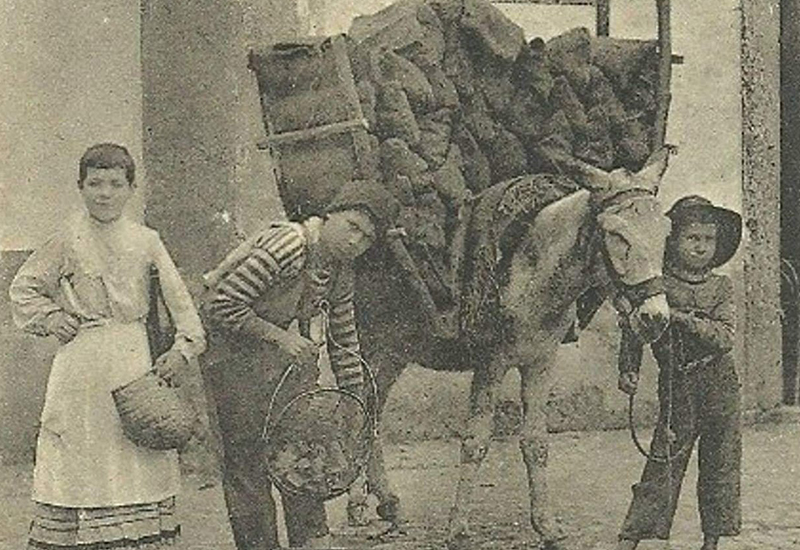
We were able to find out more information from the records series Alvarás sanitários, held by the Arquivo Municipal de Lagos, about places that sold charcoal during the period between 1946 and 1966. From these records, we can see that formerly there existed six locations where charcoal was sold in Lagos.
These were:
“Adega e carvoaria” at Rua da Extrema, 39 e 41 (Alvará 79 – 12 August 1948 – file 38) – in activity at least until January 1966“Casa da adega e carvoaria onde vende vinho por grosso, engarrafado e por medida e carvão vegetal”
“Carvoaria” at Rua do Jogo da Bola, 26 (Alvará 65 – 10 February 1950 – file 105)
“Carvoaria” at Rua 1.º de Maio, 56 (Alvará 95 – 4 April 1950 – file 100)
“Carvoaria” at Rua Miguel Bombarda, 5 (Alvará 107 – 22 December 1950 – file 110)
“Carvoaria” at Rua das Cruzes, 5 (Alvará 108 – 22 December 1950 – file 115)
“Carvoaria” at Rua Lançarote de Freitas, 28 (Alvará 109 V– 22 December 1950 – file 118)
Next time you eat a tasty meal prepared over a grill using charcoal, you might recall this short article. History is also made up of the simple things and the people who were involved in making and using them, although sometimes those particular elements of life are not easily documented.
The book Livro de Registo de Bilhetes de Residência de Estrangeiros still has more stories that deserve to be discovered.
Main image: Carvoeiro from Serra da Estrela
References:
Arquivo Municipal de Lagos (AMLGS) – Fundo da Administração do Concelho – Livro de registo de bilhetes de residência de estrangeiros (1897-1972), (AMLGS – E122/P6/301/1).
Arquivo Municipal de Lagos (AMLGS) – Fundo da Câmara Municipal de Lagos – Registo de estrangeiros com A.R. [autorização de residência] anual (1972- 1974), (AMLGS – E129/P6/544).
Arquivo Municipal de Lagos (AMLGS) – Fundo da Câmara Municipal de Lagos – Alvarás sanitários (1932-). Cota: APC E106/P4.
Felix Charvet, Arlindo Matos, José Figueiredo da Silva, Luís Tarelho, Mariana Leite and Daniel Neves – Charcoal Production in Portugal: Operating Conditions and Performance of a Traditional Brick Kiln. Energies 2022, 15, 4775. https://doi.org/10.3390/en15134775.
José Rosa Sampaio – Carvoarias e Carvoeiros no concelho de Monchique. Monchique: J. R. Sampaio, 2009.
João Veloso – Lagos gente de outrora. Lagos: Loja do Livro, D.L. 2008.
